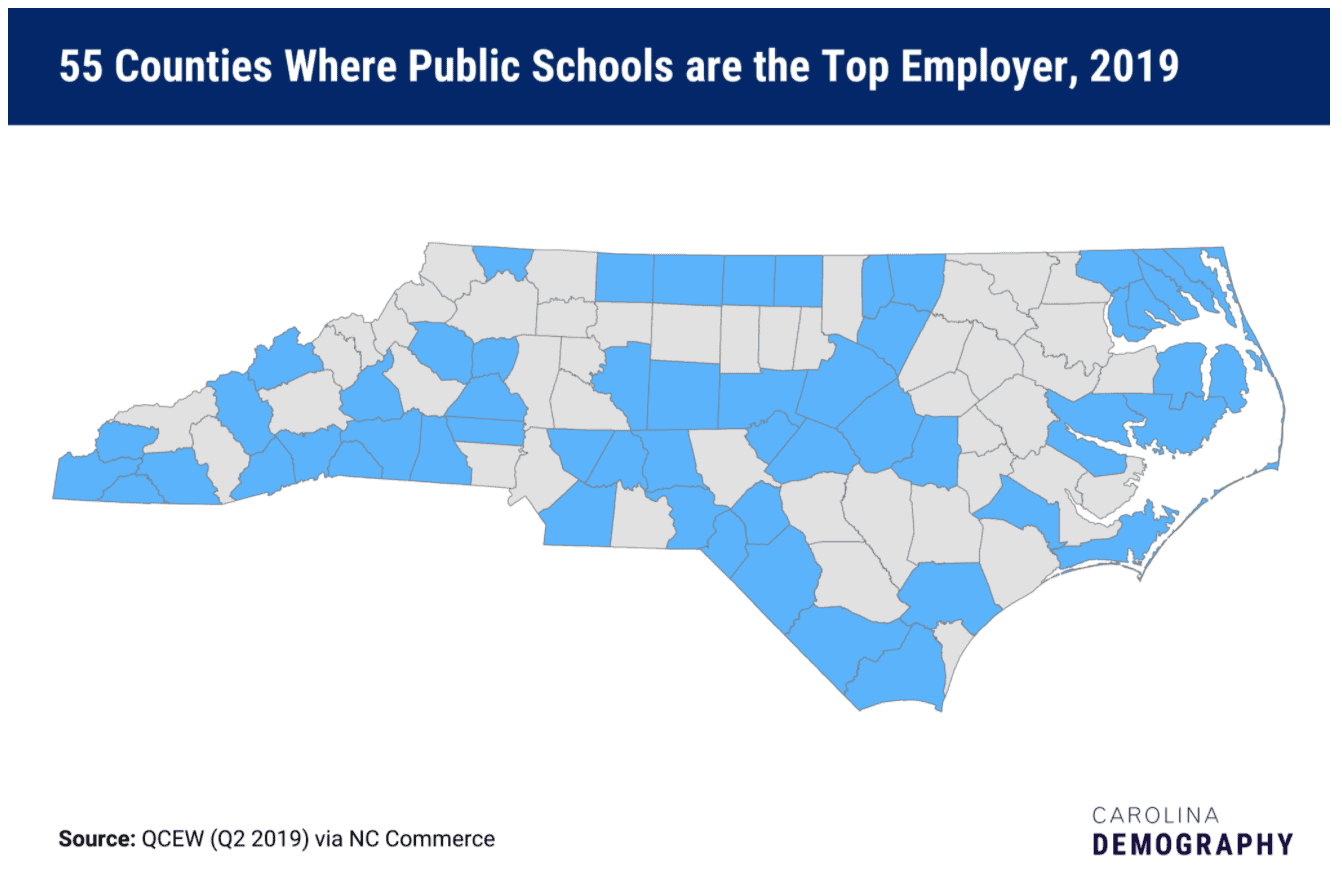Reimagining Education: The Three Elephants in the Room

By: Joe Ableidinger
As we pass the two-month mark since the initial wave of COVID-19 school closures, conversations are shifting from crisis management to what school might look like when students eventually return to brick-and-mortar classrooms.
Extended building closures have been nightmarish for many teachers, students, and families. But others have adjusted well, and some are flourishing in remote learning. In this dual reality, families are likely to expect and demand different things of schools when they reopen. Tom Vander Ark foresees parents’ increased comfort with at-home learning fueling a post-pandemic explosion in homeschool and hybrid learning. He predicts that half a million students will not return to traditional schools. Add to this mounting uncertainty about long-range social and economic impacts from the pandemic, and it is no wonder that local leaders are beginning to consider whether a return to the way schools operated before the crisis is desirable, or even plausible.
Some innovative North Carolina education leaders are choosing to approach this moment with optimism, seeing in the current upheaval the potential for reimagining systems that have long been impervious to significant change. At the nonprofit organization The Innovation Project (TIP), we work with forward-thinking North Carolina district leaders to find and implement transformative practices in their schools and central offices. Facing the current crisis, our members are preparing, through thoughtful planning and bold action, to shape what George Couros, educator and author of The Innovator’s Mindset, calls a “new and better normal.”
As they prepare for what comes next, continuing roles for online learning and digital tools are taking center stage. However, there are three “elephants in the room” where these innovative discussions are taking place—three big, under-acknowledged questions standing in the way of moving from the current crisis to sustained, learner-centered transformation.
Evaluation: Will Waivers Usher in a New Accountability Era?
When the US Department of Education granted waivers from federal testing requirements in March, states found themselves in a historic position: considering how best to educate students outside a landscape shaped by federally-mandated standards-based reform and associated high-stakes tests. Consider: A Nation at Risk came out in 1983; the standards movement took root in the late 80s and early 90s; and Congress passed the No Child Left Behind Act in 2001. At the same time, major technological advances were reshaping almost every area of American life. Apple launched the Macintosh in 1984; the first website in the U.S. went live in 1991; and the majority of U.S. citizens were online by 2002, with broadband and handheld computing arriving shortly thereafter.
The significance of this cannot be overstated: American schools have never had the opportunity to fully harness 21st-century technologies without the specter of point-in-time end-of-grade and end-of-course tests looming over their efforts.
Will this opportunity persist? Might this be the end of the 30-year era of standards-based reform? State and federal waivers this spring could pave the way for profound shifts to competency-based learning models. However, they could just as easily be framed as temporary fixes and cast aside for 2020-21. A return to pre-pandemic accountability models would severely limit long-range efforts at sustained, dramatic transformation.
Employment: What Will the Workforce Look Like?
In 55 of North Carolina’s 100 counties, the school district is the top employer. With districts discussing bold innovations, community members may reasonably wonder what the impact will be on local workforces. Some are particularly wary of remote learning, which could shake up the landscape for delivering instruction, for providing transportation and food service, and for school construction and maintenance.
In the past month, many students have had their first experiences with synchronous online learning. When implemented well, remote learning has placed the main focus of technology where it should be: on relationships between students and teachers (and among peers), and only secondarily on content. Online learning has also made it technologically feasible for an individual teacher to reach hundreds, or even thousands, of students. One dramatic example comes from South Korea, where in 2013, English teacherKim Ki-Hoon parlayed three hours of online lectures per week into what the Wall Street Journal called a “teaching empire,” reaching 150,000 students, making Kim a brand name, and earning him $4 million a year. In the U.S., we see analogs to Korea’s “freemarket for teaching talent” in Sal Khan’s Khan Academy videos, which are nearing two billion views, and university professors making popular courses available to the masses through online platforms like Coursera.
As more students at all levels are exposed to high-quality online instruction, the demand for these types of resources will increase. This has the potential to profoundly affect employment, raising a host of interrelated questions. Will the rock-star Kim Ki-Hoons of individual schools or districts have opportunities to reach more students? Will public systems create structures to enable excellent teachers to teach across schools or districts? Will remote learning give students access to classes that otherwise would have been unavailable? And how might all of this reshape teachers’ roles, as well as training, licensure, leadership opportunities, and pay?
Answers to these questions carry the promise of increased professionalization of teaching and improved student access to courses, excellent instruction, and revolutionary digital tools. But they also signal changes that may threaten business as usual and upset settled norms in public schools and districts, which could prove controversial and divisive.
Equity: How Will Next-Generation Systems Adapt to Meet the Needs of All Learners?
When considering systemic transformation, it may be tempting to design first and ask questions about equity later. This is backwards: educators should be using technological innovations to develop equitable models that support all students while freeing up teachers’ time and other scarce resources to better address the needs of students who are struggling.
Equity relates intimately to accountability and workforce changes. Reimagining education with an equity lens will support the development of accountability measures that better account for systems’ successes in narrowing learning and opportunity gaps. Shifts in education workforce needs will open new avenues for recruiting educators of color and for supporting delivery of excellent, culturally responsive teaching.
It is not hard to see why these three topics have become elephants in the rooms where educators are reimagining education. Transformation invokes a captivating futurism, and in this context, standards-based reform and high-stakes tests, disruptive shifts in counties’ top employers, and remedying entrenched inequities can all feel like tiresome buzzkills. This is unfortunate; educators ignore these topics at their peril: any of these elephants, left alone, could crush this moment’s strong potential for learner-centered transformation, preventing evolution to a new and better normal.
For more, see:
- Getting Through
- Getting Through: Leading Through And To A New Generation Of Learning Systems
- Hard Reset: What Will Be New Post Pandemic
Joe Ableidinger is the Vice President for Innovation and Strategy at The Innovation Project, a collaborative working group of forward-thinking North Carolina district superintendents who work together to find and implement innovative and transformative practices in public education.
Stay in-the-know with innovations in learning by signing up for the weekly Smart Update.
Getting Smart has launched the Getting Through series to support educators, leaders, and families on the path forward during such an uncertain time. This series will provide resources and inspiration as we face long term school closures, new learning environments, and address equity and access from a new lens. Whether you are just getting started with distance or online learning, or you’ve had plans in place and have the opportunity to share your work and guidance with others, there is a place for your voice and an opportunity to learn.
We’re going to get through this together, and we invite you to join us. Please email [email protected] with any questions or content you’d like considered for publication. We also invite you to join the conversation and on social media using #GettingThrough.





0 Comments
Leave a Comment
Your email address will not be published. All fields are required.